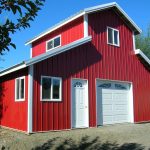This is Part IV in a four part series on Use and Occupancy. If you have just joined us now, it would behoove you to go back to Tuesday’s blog and get caught up by reading the first three parts before rejoining us for Egress.
 “1006.2.1 Egress based on occupant load and common path of egress travel distance.
“1006.2.1 Egress based on occupant load and common path of egress travel distance.
Two exits or exit access doorways from any space shall be provided where the design occupant load or the common path of egress travel distance exceeds the values listed in Table 1006.2.1.
Exceptions:
In Group R-2 and R-3 occupancies, one means of egress is permitted within and from individual dwelling units with a maximum occupant load of 20 where the dwelling unit is equipped through out with an automatic sprinkler system in accordance with Section 903.3.1.1 or 903.3.1.2 and the common path of egress travel does not exceed 125 feet.”
“1006.2.1.1 Three or more exits or exit access doorways.
Three exits or exit access doorways shall be provided from any space with an occupant load of 501 to 1000. Four exits or exit access doorways shall be provided from any space with an occupant load greater than 1,000.”
A note from me here – sliding “barn” doors and overhead or coil curtain doors are not considered as exit access doorways.
“1007.1 General.
Exits, exit access doorways, and exit access stairways and ramps serving spaces, including individual building stories, shall be separated in accordance with the provisions of this section.
1007.1.1 Two exits or exit access doorways.
Where two exits, exit access doorways, exit access stairways or ramps, or any combination thereof, are required from of the exit access, they shall be placed a distance apart equal to not less than one-half the length of the maximum overall diagonal dimension of the building or area to be served measured in a straight line between them.”
“1007.1.2 Three or more exits or exit access doorways.
Where access to three or more exits is required, not less than two exit or exit access doorways shall be arranged in accordance with the provisions of Section 1007.1.1. Additional required exit or exit access doorways shall be arranged a reasonable distance apart so that if one becomes blocked, the others will be available.”
“1010.1.10 Panic and fire exit hardware.
Doors serving a Group H occupancy and doors serving rooms or spaces with an occupant load of 50 or more in a Group A or E occupancy shall not be provided with a latch or lock other than panic hardware or fire exit hardware.”
“SECTION 2902 MINIMUM PLUMBING FACILITIES
2902.1 Minimum number of fixtures.
Plumbing fixtures shall be provided in the minimum number as shown in Table 2902.1 based on the actual use of the building or space. Uses not shown in Table 2902.1 shall be considered individually by the code official. The number of occupants shall be determined by this code.”
For A-3 occupancy water closets are required 1 per 125 male and 1 per 65 females. 1 lavatory per 200 for both males and females, one drinking fountain per 500 as well as 1 service sink.”
“2902.1.1 Fixture calculations.
To determine the occupant load of each sex, the total occupant load shall be divided in half. To determine the required number of fixtures, the fixture ratio or ratios for each fixture type shall be applied to the occupant load of each sex in accordance with Table 2902.1. Fractional numbers resulting from applying the fixture ratios of Table 2902.1 shall be rounded up to the next whole number.”
This particular client does not currently have a septic system which would or could serve the building, adding to the challenges.






